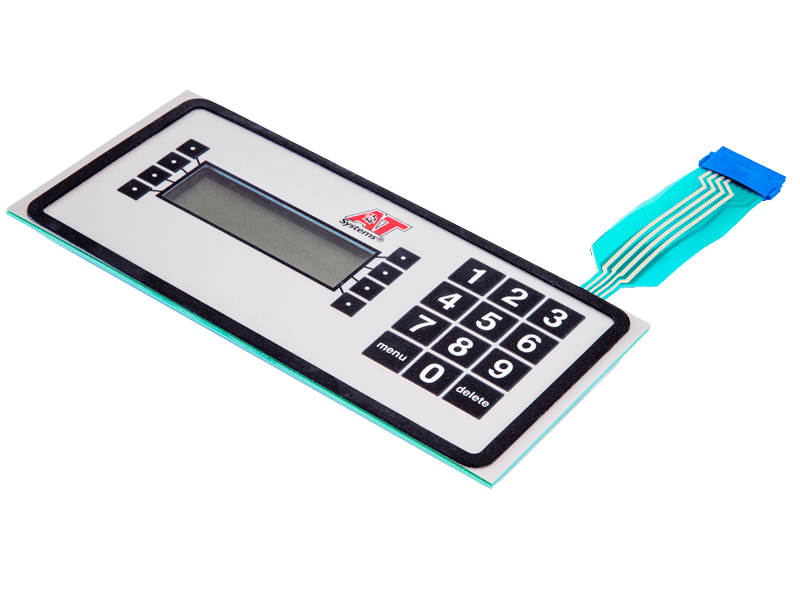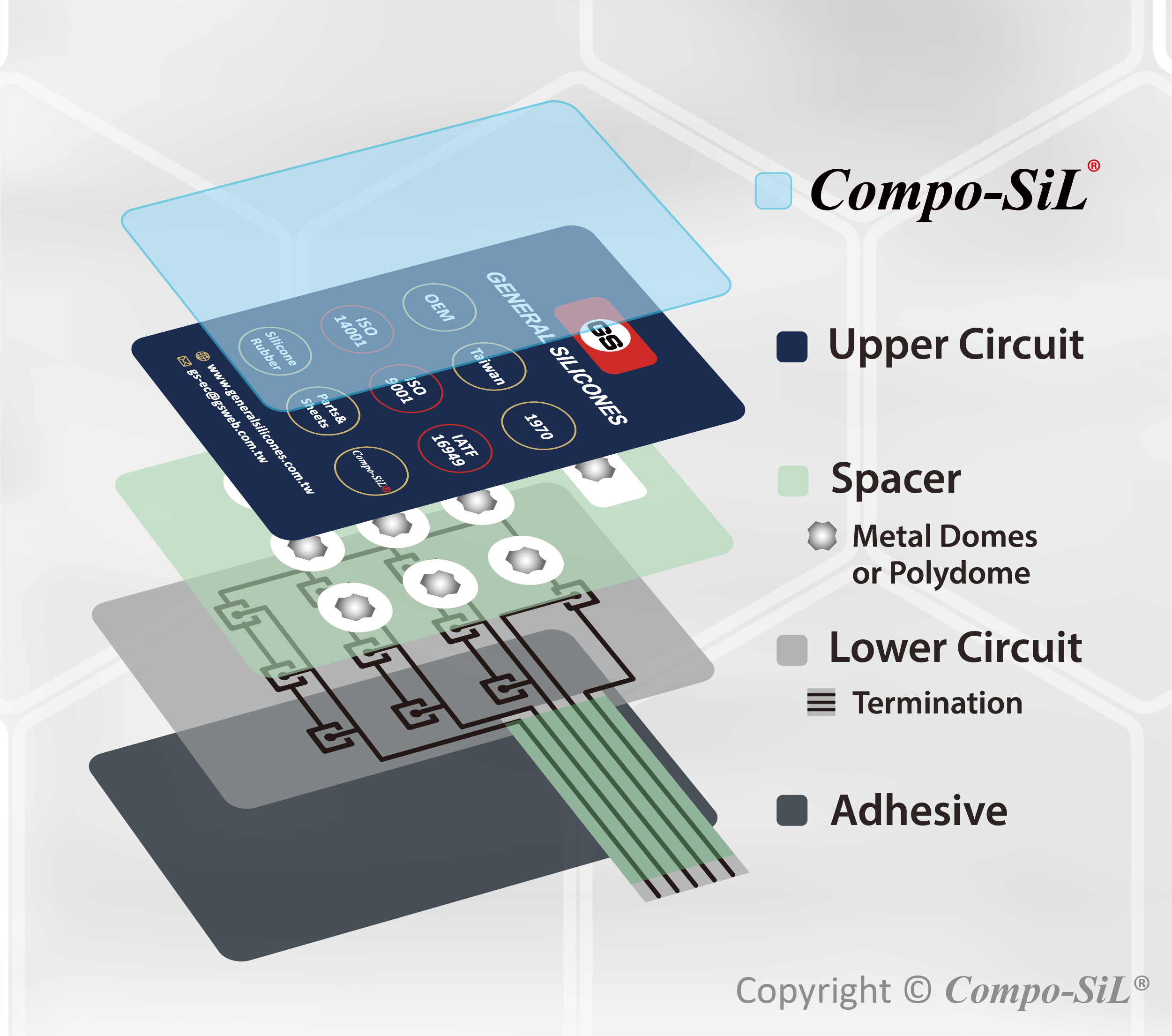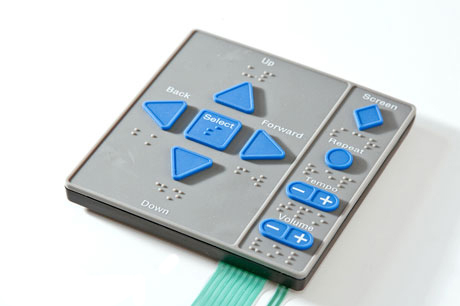Understanding the Technology Behind Membrane Switches
Understanding the Technology Behind Membrane Switches
Blog Article
Understanding the Significance of Membrane Switches in Interface
Membrane buttons are important elements in the design of reliable interface, helping with not just performance but additionally improving aesthetic appeal and individual interaction. Their unique functions, such as resistance to adjustable designs and environmental aspects, make them ideal for a varied array of applications across several markets. As we check out the numerous advantages and future fads related to Membrane modern technology, it comes to be clear that these buttons are a lot more than just parts; they represent a merging of technology and usefulness. The effects of this modern technology on customer experience deserve checking out further.
What Are Membrane Buttons?

The spacer layer, which consists of sticky homes, enables the separation of the circuit layer from the overlay, ensuring that the button stays in a non-activated state up until pressed. When stress is used to the overlay, it compresses the spacer layer, bridging the void and completing the circuit in the underlying layer. This design not just minimizes the physical area required for typical mechanical buttons but also boosts the sturdiness of the device, as Membrane switches are generally immune to dust, moisture, and various other environmental factors.
Generally discovered in applications varying from customer electronics to clinical devices, Membrane switches are integral to modern-day technology, giving a straightforward and effective user interface that lines up with modern style needs.
Benefits of Membrane Switches
While numerous button modern technologies exist, Membrane Switches offer distinctive benefits that make them particularly preferable in numerous applications. Among the primary advantages of Membrane buttons is their compact style, which allows for space-saving applications in devices where realty is limited. Their thin account not just improves aesthetic charm but also facilitates light-weight construction.
An additional significant advantage is their resistance to ecological factors. Membrane buttons are generally secured versus moisture, dust, and impurities, making them ideal for use in requiring environments, such as medical gadgets and commercial equipment. This sturdiness expands the lifespan of the switch, minimizing upkeep prices and enhancing dependability.
In addition, Membrane switches can be customized to satisfy certain layout requirements, incorporating distinct graphics and shades that boost customer communication. Their responsive feedback options can likewise be tailored to supply an enjoyable customer experience. Additionally, Membrane switches are cost-efficient, specifically in high-volume applications, as they can be produced successfully.
Applications in Different Industries

In the consumer electronic devices field, Membrane switches are widespread in tools such as microwaves, washing machines, and remotes. Their tactile responses and visual alternatives enhance individual experience while offering a sleek, contemporary appearance. In addition, automotive producers utilize Membrane buttons in dashboard controls and infotainment systems, where space is limited, and user interaction is important.
In addition, the commercial field leverages Membrane buttons in control panels for equipment and devices, enabling user-friendly procedure in commonly severe atmospheres. Their resistance to chemicals and wetness ensures longevity and integrity in these applications. Generally, the adaptability of Membrane Switches contributes significantly to their widespread usage, making them indispensable in various technical domain names.
Style Considerations for Membrane Buttons

When developing Membrane buttons, a number of essential considerations have to be considered to guarantee optimal capability and individual experience. The selection of materials is essential; choosing durable, high-grade substrates can enhance the switch's longevity and resistance to ecological elements such as moisture and temperature variations.
Secondly, the layout of the graphic overlay should prioritize clearness and convenience of use. Symbols and text have to be clear, and the layout must promote instinctive interaction (membrane switches). In addition, tactile responses is essential; integrating a tactile dome or various other mechanisms can improve the customer experience by giving physical verification of activation
Another vital aspect is the switch's electrical efficiency. Developers have to guarantee that the conductive traces are properly created to decrease resistance and avoid signal interference. This entails assessing the required actuation pressure and guaranteeing compatibility with the digital components they will certainly interface with.

Future Trends in Membrane Modern Technology
As technology remains to advance, Membrane buttons are positioned to develop substantially, driven by innovations in materials and producing strategies. One emerging pattern is the unification of advanced materials, such as conductive inks and versatile substratums, which improve longevity and reduce the total my link weight of Membrane buttons. These materials not just improve the responsive feedback but also permit the style of buttons that can hold up against harsher environmental conditions.
Additionally, the combination of touch-sensitive modern technologies is changing typical Membrane Switches right into even more interactive interface. Capacitive touch sensors embedded within Membrane switch panels can provide a more intuitive and responsive user experience, straightening with the expanding need for streamlined, modern-day layouts in customer electronic devices.
In addition, advancements in printing techniques, such as digital and 3D printing, enable rapid prototyping and customization of Membrane buttons. This flexibility allows manufacturers to respond faster to market demands and consumer choices.
Last but not least, sustainability is coming to be a significant emphasis, with suppliers discovering green products and procedures. As these patterns unfold, the future of Membrane modern technology assures improved performance, aesthetic allure, and ecological obligation, solidifying their role in innovative customer interfaces across various industries.
Verdict
To conclude, Membrane Switches stand for a crucial component in the layout of customer interfaces, integrating functionality with visual versatility. Their advantages, consisting check over here of resilience and resistance to ecological elements, make them ideal for varied applications across numerous industries. Moreover, thoughtful design like this considerations enhance customer communication and experience. As improvements in innovation proceed, the development of Membrane buttons is expected to additional refine customer interfaces, driving development and improving usability in a significantly complicated technological landscape.
Membrane buttons are indispensable components in the style of reliable user interfaces, assisting in not only functionality however likewise boosting visual appeal and individual communication.Membrane Switches offer as a vital component in different customer interfaces, facilitating a seamless interaction in between customers and electronic devices.While many button modern technologies exist, Membrane Switches offer unique benefits that make them specifically preferable in various applications.Furthermore, Membrane buttons can be tailored to fulfill specific design requirements, integrating special graphics and shades that boost customer communication.In conclusion, Membrane Switches represent a vital component in the design of user interfaces, integrating performance with aesthetic adaptability.
Report this page